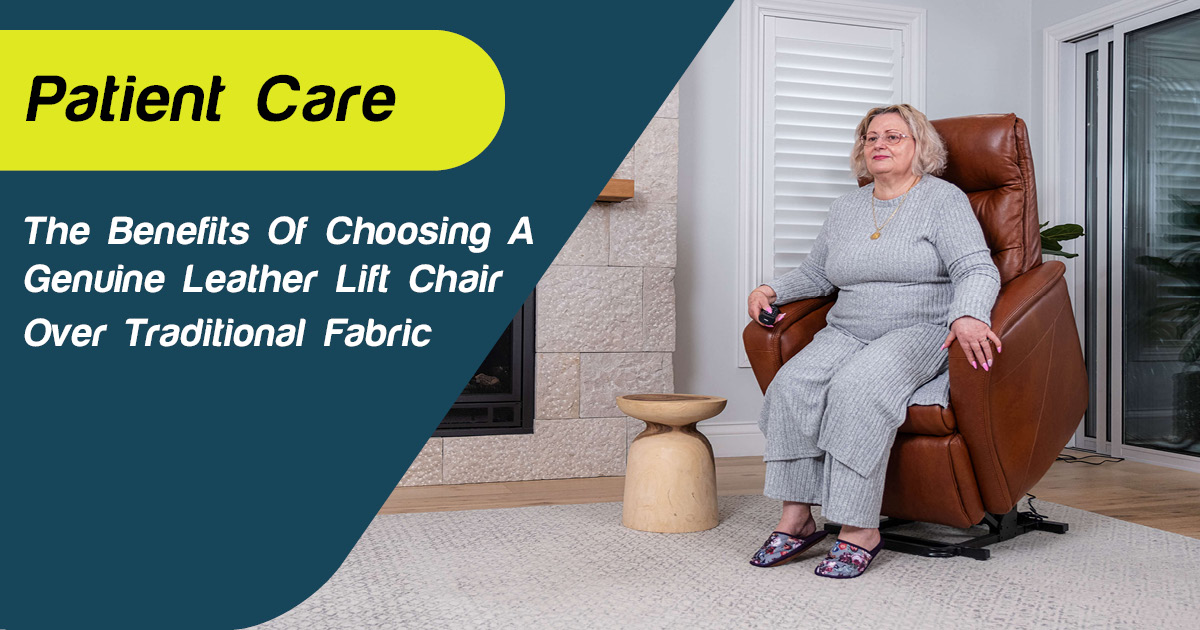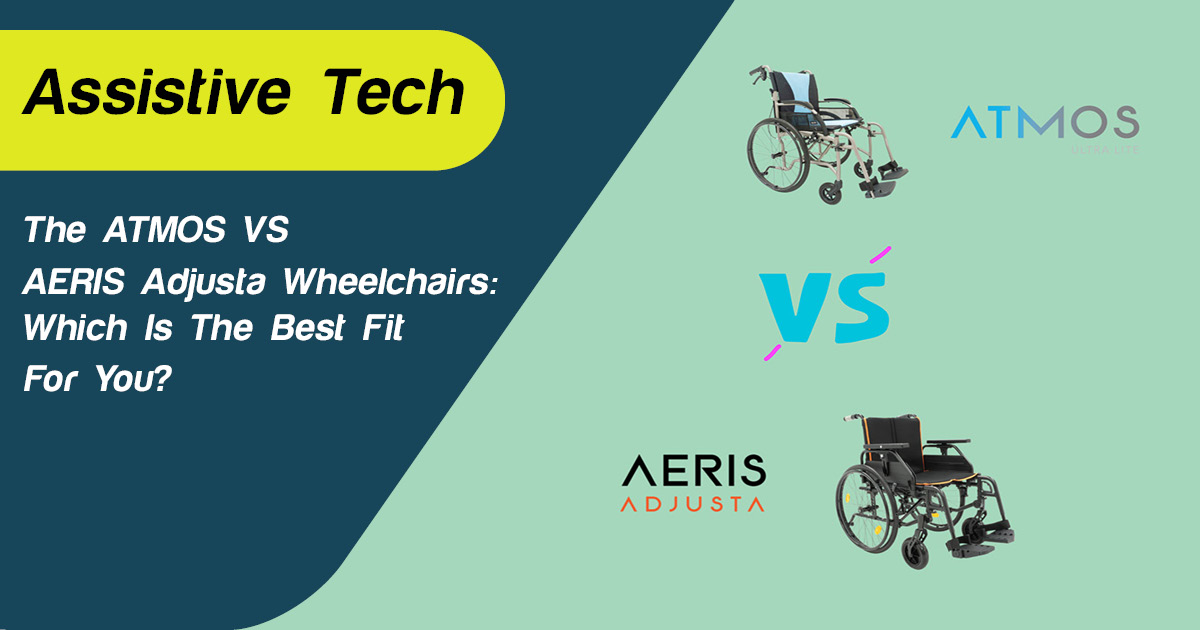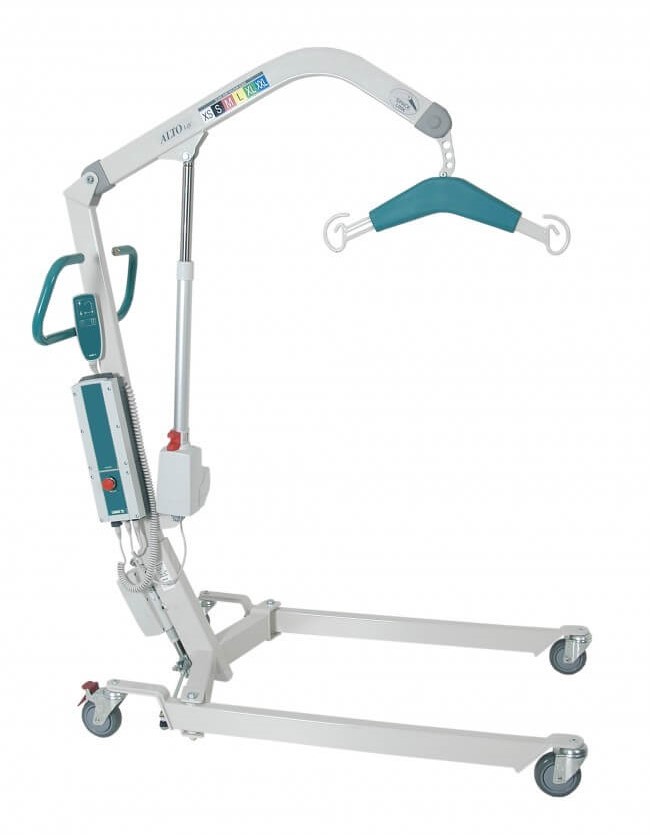
Share
Whether you’re caring for a family member at home or working in a medical facility like a hospital or aged care centre, it is vitally important to know how to use a hoist correctly.
Patient lifting can be dangerous if not executed right. We know helping a patient into a sling and moving them from point A to B can be complicated -- it can also be physically exhausting for the carer and nerve-wracking for the patient. With this in mind, this article explains how to use a hoist step-by-step, whether you’re using a ceiling hoist, a mobile hoist or a pool hoist.
How to use a hoist with a sling
Most patient hoists (including mobile and ceiling hoists) use a patient sling to support and lift patients. We recommend following these steps, regardless of what kind of hoist you use (and refer to the client’s manual handling plan/transfer procedure where available).
- Check the weight of the patient. It’s important that the patient’s weight doesn’t exceed the weight capacity of the hoist. You can find this information in the hoist’s manual.
- Clear away any obstacles. For the safety of the patient and the carer, make sure the area is clear of any obstacles that could impact the use of the hoist. Be sure there’s enough room to lift and move the patient.
- Check the hoist and sling. Before using the hoist, ensure everything is working properly and in good order. This includes checking the sling for rips, tears and other visible signs of wear and tear. We recommend maintaining your hoist at least once every six months to ensure patient safety.
- Help the patient into the sling. If the patient is on a bed, carefully help the patient to roll over onto their side -- we recommend having two carers available to help slide the sling under the patient’s back and then roll back over. You will then need to repeat the process on the other side to ensure the sling is lined up properly.
- Attach the sling to the hoist. Once the patient is ready to be lifted, prepare the hoist so the sling can be securely attached. Before lifting the patient, double-check that the attachments are correctly fitted and secure. Leg straps also often need to be crossed for safety.
- Begin lifting the patient. Gently lift the patient until they are hovering over the surface e.g. the floor or the bed. Ensure the patient has been lifted high enough so their feet don’t drag along the surface. You can then move the patient.
- Never leave the patient unattended. You must accompany the patient at all times.
How to use a floor hoist
The instructions above apply to most hoists, but there are a few key differences you must understand before using a floor hoist:
- Avoid long-distance movements. Floor hoists are made for small movements. If the patient needs to go further, we recommend using a wheelchair or a ceiling hoist for safety.
- Store the hoist properly. After using a floor hoist, store it away to avoid it getting in the way. Find somewhere where it can be charged while not in use.
How to use a ceiling hoist
The major benefit of a ceiling hoist is that no floor space is required -- the sling hangs from a stable ceiling track. Simply follow the instructions outlined under “how to use a hoist with a sling” and complete safety checks before use including:
- Check the hoist has been charged. Ensure the ceiling hoist is fully charged before use to prevent interruptions during transfers. If the battery indicator shows a low charge, connect it to the charger and wait until it reaches full capacity.
- Clear away any obstructions. Before you can use a ceiling hoist, you need to make sure the pathway under it is clear.
- Check the condition of the sling. Any rips, tears or wear in the sling could be dangerous for the patient. Make sure it is in good working condition. We also recommend checking the instruction manual and ensuring the sling is the right fit and size for the patient.
How to use a pool hoist
Water is an excellent way for the elderly and disabled to relax, so it’s important to know how to use a pool hoist for those warm summer days -- or cool days when a bubbling spa is needed. There are three types of pool hoists available:
- Battery-powered hoists can lift up to 30 people on a full charge.
- Mobile hoists have to be placed to the spot where there is an anchor point. However, they can be moved and stored out of the way.
- Fixed hoists are permanently installed in one position to provide a stable, anchored lift for users entering and exiting the pool.
How to use a bath hoist
A bath hoist or bath lift is designed to help patients enter and exit the bathtub safely. While features vary between models, most bath hoists follow a similar process, using a powered or manual mechanism to lower and raise the user into the water.
- Position the bath lift. Place the bath hoist in the tub, ensuring the suction cups are securely attached to the bath floor.
- Have the patient sit on the seat. The user should sit on the edge of the bath lift seat, ensuring they are positioned centrally for balance.
- Lower the patient into the water. Using the waterproof hand control, gently press the ‘down’ button to lower the patient into the water. The lift should stop automatically when fully lowered, allowing the patient to bathe comfortably.
- Raise the seat after the patient is finished bathing. When ready to exit, press the ‘up’ button on the remote. The lift will slowly raise the patient back to the original seated height.
- Help the patient exit the bath safely. Once raised, the patient can slide their legs over the side of the bath and stand with assistance if needed. Ensure the patient is stable before stepping away from the bath lift.
Other tips for using a hoist
Now you know how to use a hoist step-by-step whether it’s a standing hoist, a ceiling hoist or a pool hoist -- but of course, there are other steps you will need to take and consider when lifting a patient. For example:
- Ensure you have two people to prepare the patient. This will make manoeuvring the patient onto the sling easier and lifting them safely. It can be done with one person, but it will be much more challenging!
- Explain the process to the patient. Tell the patient you will use the hoist to safely lift and move them without hurting them. Allow them to ask questions, and if they can, allow them to carry out simple instructions like holding their arms crossed over the chest or holding onto the sling.
- Reassure the patient. The patient’s comfort—both physical and emotional—is crucial. Some patients are scared they will be dropped while using the hoist. Be sure to reassure them and keep talking to them throughout the lifting and moving process.
- Wash and dry your hands before touching the patient. This will protect them from any germs. Consider wearing an apron and/or rubber gloves.
- Know what to do in an emergency, such as where the emergency stop button and the emergency lower function are located on the hoist.
- Ensure the sling is clean. Read the sling’s instructions on how to launder and sanitise it properly after use. If you use a single-use/disposable sling, dispose of it when the patient no longer needs it.
- Ensure help is nearby if needed. In a medical facility, make sure a nurse or an alarm is close by in case anything goes wrong. If you’re using the sling at home, ensure a medical alarm is nearby so you can call for help.
- Observe the patient at all times. Some patients will get anxious in the sling, so keep talking to them and stay close.
Learn how to use a hoist step-by-step with Active Mobility
Want to learn how to use a hoist in person? At Active Mobility, we’re committed to showing support workers how to use our equipment safely, so we offer regular training at our showroom in Silverwater, Sydney.
We hold monthly seminars to showcase new products, share experiences among professionals and show carers how to use our equipment in a safe and efficient manner. Subscribe to our mailing list to be notified when we’re holding our next hoist seminar, or check out our “Events” page to book your seat today.















